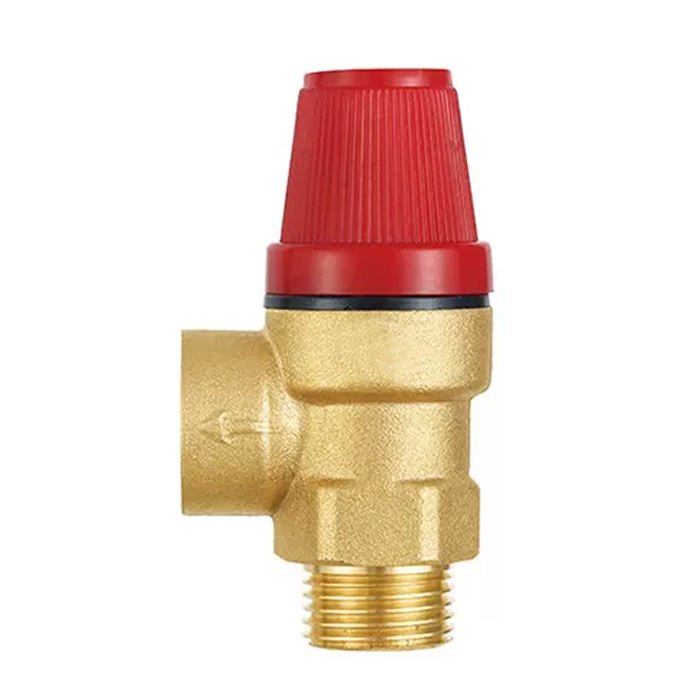Your boiler’s leaking water from the relief valve, and it’s stressing you out. A dripping pressure relief valve can waste water, spike energy bills, and even damage your system or property if ignored. Don’t worry—understanding why this happens and how to fix it is simpler than you think. Keep reading to learn practical solutions and prevent costly repairs with tips tailored for your system.
A boiler leaks water from the relief valve due to excessive pressure, a faulty valve, or issues with the discharge pipe. Common causes include high water pressure, sediment buildup, or a damaged valve. Replacing the valve, adjusting pressure, or installing a proper discharge pipe often resolves the issue. Regular maintenance prevents future leaks.
Curious about fixing this issue for good? Let’s dive into the details to help you tackle this problem and keep your boiler running smoothly.

How Do I Fix a Leaking Pressure Relief Valve?
A leaking boiler pressure relief valve can feel like a headache, but fixing it is straightforward if you know the steps. First, let’s identify why it’s leaking. The pressure relief valve is designed to release excess pressure to protect your boiler from damage. If it’s dripping, the pressure might be too high, the valve could be faulty, or the boiler pressure relief valve discharge pipe might be improperly installed. Start by checking the boiler’s pressure gauge. For most systems, like those operating at boiler relief valve 30 psi, the pressure should stay between 1.5 to 2.5 bars. If it’s higher, you may need to bleed the system or adjust the pressure reducing valve to lower it.
If the pressure is normal but the leak persists, inspect the valve itself. Sediment or debris can prevent it from sealing properly, causing water to escape. Turn off the boiler, drain it partially, and remove the valve for cleaning. If it’s damaged, a boiler pressure relief valve replacement is necessary. The boiler pressure relief valve replacement cost typically ranges from $50 to $200, depending on the valve type and labor charges in your area, such as in Russia or Germany. Always choose high-quality valves, like those from IVALVECRAFT, to ensure durability and stable performance.
Another common issue is the boiler pressure relief valve discharge pipe. If it’s too long, poorly angled, or blocked, water may not drain properly, causing backpressure and leaks. Ensure the pipe is short, slopes downward, and is free of obstructions. For complex systems, like those in large buildings, consult a professional to check for underlying issues, such as a malfunctioning thermostatic mixing valve or manifolds affecting pressure distribution. Regular maintenance, including annual checks, can prevent these problems and extend your boiler’s life.
What Is the 3% Rule for PRV?
The 3% rule for a pressure relief valve (PRV) is a guideline used in boiler and heating system design to ensure safe operation. It states that the pressure relief valve should be sized so that the maximum pressure in the system doesn’t exceed the valve’s set pressure by more than 3% during normal operation. This rule is critical for systems like those using boiler relief valve 30 psi or higher, as it prevents overpressure that could lead to leaks or catastrophic failures. For example, in a system designed for 30 psi, the PRV should activate before the pressure hits 30.9 psi to keep things safe.
Why does this matter? In regions like Poland or the UK, where IVALVECRAFT exports high-quality brass safety valves, adhering to the 3% rule ensures compliance with strict safety standards. If the pressure exceeds this threshold, the boiler pressure valve opens to release excess water or steam, preventing damage to the boiler or connected components like manifolds or mixing pump heating centers. A poorly sized or malfunctioning PRV can cause issues like a furnace pressure relief valve leaking, leading to water loss and inefficiency.
To apply the 3% rule, check your boiler’s specifications and ensure the PRV is rated correctly for your system’s maximum pressure. For instance, if you’re running a commercial setup in Romania or the Czech Republic, your boiler pressure relief valve location should be easily accessible for maintenance, and the valve must handle the system’s flow rate without exceeding the 3% limit. If you’re unsure, IVALVECRAFT’s brass thermostatic radiator valves and PRVs are designed for precision, ensuring stable pressure and sufficient flow. Regular testing, such as checking for leaks or sediment buildup, keeps your PRV compliant with the 3% rule and your system safe.
Summary
A leaking boiler pressure relief valve is a common issue that can stem from high pressure, a faulty valve, or a problematic discharge pipe. By checking the pressure, cleaning or replacing the valve, and ensuring proper pipe installation, you can fix the problem and prevent future leaks. The 3% rule helps maintain safe pressure levels, protecting your system from damage. Regular maintenance and high-quality components, like those from IVALVECRAFT, ensure long-term reliability for wholesalers, construction projects, and plumbing retailers in markets like Russia, Germany, and the UK.
Choose IVALVECRAFT, choose reliable partner, enjoy the high quality and best service.


